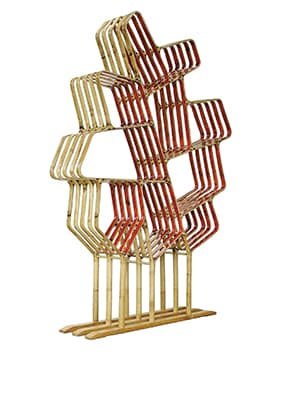The Life and Times of a Bamboo Artist
Bending bamboo to his designs is what Sandeep Sangaru does best


Most of us—urban creatures—would be familiar with bamboo in the form of decorative artifacts that adorn the walls as ‘ethnic’ décor. But take a trip to Tripura—where bamboo is woven not just into baskets or mats, but is bent and trussed into bridges, fish traps and even houses—and you may well change your mind about this multifaceted member of the grass family.
Or, you could take a look at Sandeep Sangaru’s creations.
But it is not bamboo alone that commands the attention of this alumni and former faculty member of the National Institute of Design. Sangaru has always been keen on tinkering with odds and ends in his backyard: As a child, when school (which he didn’t quite have an interest in) gave over for the day, he would find himself something more engaging to spend his time with as a grown-up, he took naturally to the techniques of craft-making rather than industrial scale design, despite becoming a mechanical engineer.
“Crafts opened my eyes to what can be done in the backyard. For instance, brass casting or metal casting. It is done in an everyday process, like cooking in the kitchen as simple as that. When you are doing engineering, you look at things in a very different way, everything has a formula. But when you see the same process done in a backyard, with very basic tools, then you see it as something beautiful.”
During a month-long stay in Tripura, where he was teaching artisans to translate designs into prototypes, Sangaru “saw how people live there… What we get to see as bamboo crafts from the northeast is very superficial. The craftsmen made these items mostly for decoration, rather than for any use. These items are nothing like what the craftsmen make for themselves, things that are very functional. They make these items—anything from a bird cage, to a house—with simple tools, perhaps just a knife.”
But it would be unfair, and inaccurate, to entirely discount his training as an engineer from his present vocation. In the various projects he has taken up—whether it be working with bamboo in Tripura, walnut wood in Kashmir, or Chennapatna techniques (lacquer-painting of wood) in Karnataka—his design and technology interventions are aimed at making processes more efficient and sustainable, while widening the scope of their utility.
While documenting the crafts of Andhra Pradesh, Sangaru went from village to village, home to home, trying to see how crafts are made. “When I saw the process of making these crafts—metal casting, crochet, weaving—it opened me to the possibility of how design can intervene in making them functional, in a mainstream production and market.”
The journey, though, has not been easy. Try telling prospective clients or sponsors that your team comprises rural craftsmen, and you will see their enthusiasm dimming rapidly. “People have a mental set up, and they are ready to invest only in what is already proven and there in the market. No one comes forward to give their input when I say I am working with craft, and bamboo.” Working with craftsmen, too, poses its own set of difficulties. Artisans, long accustomed to being exploited, are wary of new ideas and experimentation. “When I first went to Kashmir in 2004, I was thrown out of a house. I was told, ‘Aap to Hindustan se hain. Aap yahan kya karoge?’ You need to have patience, and I kept going back. Now, we exchange designs over emails, and they ship the products to me.”
In 2010, he started Sangaru Design Studio (sangaru.com), which aims to bring innovative craft into mainstream retail. Having worked as a consultant on various projects, he realised that the designs and innovations that he and the craftsmen would work on never quite found themselves to customers the projects were ends unto themselves. “That is when I felt that I should manufacture [in collaboration with artisans] and sell these products myself.”
After further experimentation with product designs and manufacturing processes, Sangaru Design Studio finally started selling in 2012. “Our facility [in Bangalore] is small. We make things to order, and ship them all across the world.” Although the products on sale are now made of bamboo, pottery and handloom will also soon feature on the list.
But it is in China that Sangaru seems to have found a following. After being invited to be part of the first Beijing International Design Triennial in 2011—‘Rethinking Bamboo’ was one of its themes—Sangaru found his products being sought out by a local clientele. His furniture has also been bought by Beijing’s Temple Hotel, a 600-year-old structure that won the 2012 Unesco award for heritage conservation. “It seems people who come to stay at the hotel want to buy the furniture.” Sangaru laughs.Despite the challenges, Sangaru has his roadmap in sight: Working with bamboo, rural craftsmen, selling their products to an appreciative clientele, and setting up a model village for craftsmen and artisans amid a bamboo plantation near Bangalore… Would he call this his dream project? The answer is immediate and definite: “Yes”.
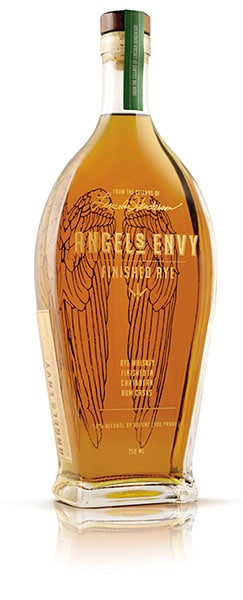
Angel’s Envy Bourbon
Price: $70
The late Lincoln Henderson spent decades as a master distiller at Jack Daniel’s before gathering up his clan and heading to Kentucky to create his own brand of whiskey. Their Angel’s Envy bourbon attracted an immediate cult following, but what to do for Act II? The Hendersons (Lincoln passed away last year) followed with a rye that slips onto the tongue with the same strikingly sweet, luscious flavour as their bourbon, taking the edge off rye’s peppery notes by finishing their Kentucky whiskey in—follow the ball—former Cognac barrels used in between to age Caribbean rum. Once the country cousin, rye is now a suave global citizen.
angelsenvy.com 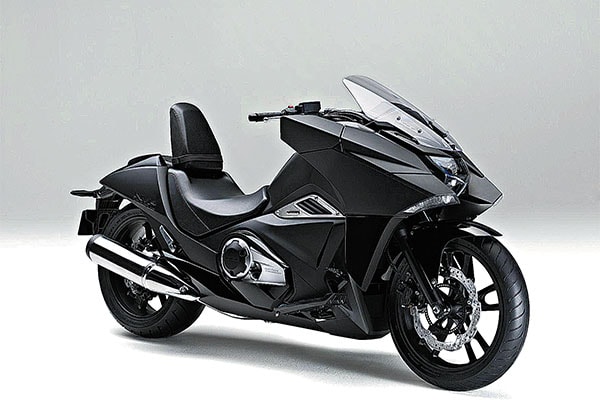 Honda NM4 Vultus
Honda NM4 Vultus
Price: Not yet confirmed
Honda’s NM4 Vultus, a scooter-motorcycle hybrid, is in the same vein as the DN-01 but vastly more interesting to look at in a dark, edgy sort of way. Designed by a young team, it features a 54 PS 754 cc twin (likely to be the one in the NC750 models) that promises strong low and mid-range performance. The transmission, similar to the VFR1200’s dual clutch transmission, is an
automatic.nda.com  Toshinori Takeyama’s Bass Baits
Toshinori Takeyama’s Bass Baits
Price: $425
Toshinori Takeyama first became obsessed with largemouth bass at age 10, when he saw the American import in a river near his home in Japan’s Gifu Prefecture. Twenty years later, Takeyama has created lures nearly unparalleled for their beauty and bass appeal. His collection is headlined by the Mother Triple, which retails for $425. Each Mother—from the hand-carving of the dense, buoyant cypress to the meticulous paint detailing—takes 15 hours to create.
romanmade.com 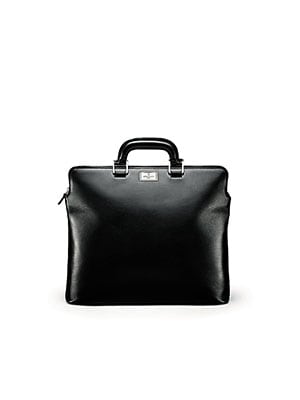
Corneliani Travel Bags
Price: On request
Travel in style with the Nappa calfskin, Jacquard-lined, Corneliani travel bag (above). It comes with an address holder on the back, and a label with a logo in polished palladium-plated solid brass with brushed edges. Or, opt for the the Nappa calfskin hold-all (below) with metal zip fastening, and multi-purpose compartments.
corneliani.com 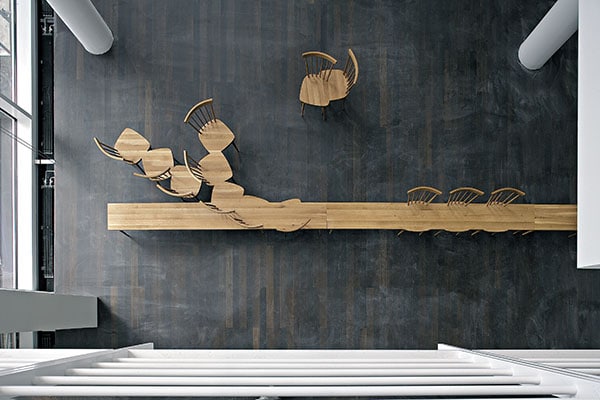 Stuhlhockerbank
Stuhlhockerbank
Price: On request
Old and traditional are redefined to contemporary and novel by Germany-based Yvonne Fehling and Jennie Peiz to create Stuhlhockerbank, a public seating concept that eliminates the dividing lines between different types of old grandfather-chair models into a bench. The idea was to create a structure that encourages interactivity and conversations, where people sit facing each other. Besides seating, the extended planks adjoining the seats can also be used to place whatever one is holding while one relaxes on the bench.
kraud.de/en 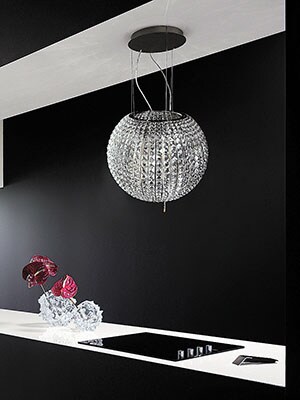 Elica split chimneys
Elica split chimneys
Price: Rs 1.25 lakh onwards
Keeping in mind the increasing space that kitchens are occupying in family life and conversations, Elica India introduces split chimneys that keep the noise out, along with unwanted smoke and odours. The chimney is placed outside the house, reducing noise and maintenance, while the interiors remain super stylish.
elicaindia.com
A selection from the editors of ForbesLife India, ForbesLife and Network18 Publishing
First Published: Jul 26, 2014, 06:34
Subscribe Now(This story appears in the Feb 05, 2010 issue of Forbes India. To visit our Archives, Click here.)
